
Kawasaki Z7 Hybrid Review: Futuristic Commuter or Flawed Experiment?
Overall Rating: 3/5
Kawasaki's Hybrid Motorcycle Revolution
Kawasaki has made significant strides in the realm of sustainable transportation with their groundbreaking hybrid motorcycle models.
Hybrid Powertrain:
The Z7 Hybrid and Ninja 7 Hybrid are the first mass-produced hybrid motorcycles, combining a gasoline engine with an electric motor. This hybrid powertrain delivers impressive fuel efficiency and a unique riding experience.
- Z7 Hybrid: This model boasts a 699cc parallel-twin engine paired with a 48-volt electric motor and lithium-ion battery.
- Ninja 7 Hybrid: Featuring a 699cc inline-four engine, the Ninja 7 Hybrid shares the same electric motor technology as the Z7.
Eco-Hybrid Mode:
Kawasaki's Eco-Hybrid mode optimizes fuel consumption, achieving an impressive estimated 80 mpg. This mode prioritizes electric power, offering a quiet and emissions-free ride, especially in urban environments.
Fully Electric Operation:
One of the most remarkable aspects of the hybrids is their ability to run solely on electric power for a limited range. This feature provides significant advantages in congested city centers, reducing noise and emissions.
Key Takeaways:
- Kawasaki's hybrid motorcycles are a significant step towards a more sustainable future in the motorcycle industry.
- The Z7 Hybrid and Ninja 7 Hybrid models offer a blend of performance and fuel efficiency, catering to urban commuters.
- The Eco-Hybrid mode and fully electric operation capabilities significantly reduce emissions and noise pollution.
The Z7 Hybrid's Potential
Z7 Hybrid: A Mixed Bag of Innovation
The Z7 Hybrid presents a compelling proposition for eco-conscious drivers, but its implementation reveals several shortcomings.
Gearbox & Handling
The Z7's gearbox is notorious for its clunky shifting, especially during acceleration and deceleration. This leads to a jerky ride and compromises the overall driving experience. Additionally, the vehicle's handling feels heavy and unresponsive, particularly in tight corners and at higher speeds.
Price & Competition
The Z7's hefty price tag underscores its status as a premium offering. However, this premium price is a significant drawback when considering the lackluster performance compared to its petrol-powered rivals. These competitors often achieve better fuel efficiency and offer a more refined driving experience for a lower cost.
Practicality & Key Takeaways
While the Z7 Hybrid offers a solid attempt at integrating hybrid technology, it falls short in delivering a truly competitive package. Its shortcomings in terms of gearbox responsiveness, handling, and cost-effectiveness make it hard to recommend for mainstream adoption.
-
Key Takeaways:
- The Z7 Hybrid prioritizes hybrid technology over overall driving experience.
- It may appeal to early adopters, but its lack of practicality hinders mass appeal.
- The high price point, combined with drawbacks in performance, make it a tough sell against established petrol alternatives.
Ride Quality and Brakes: 3/5
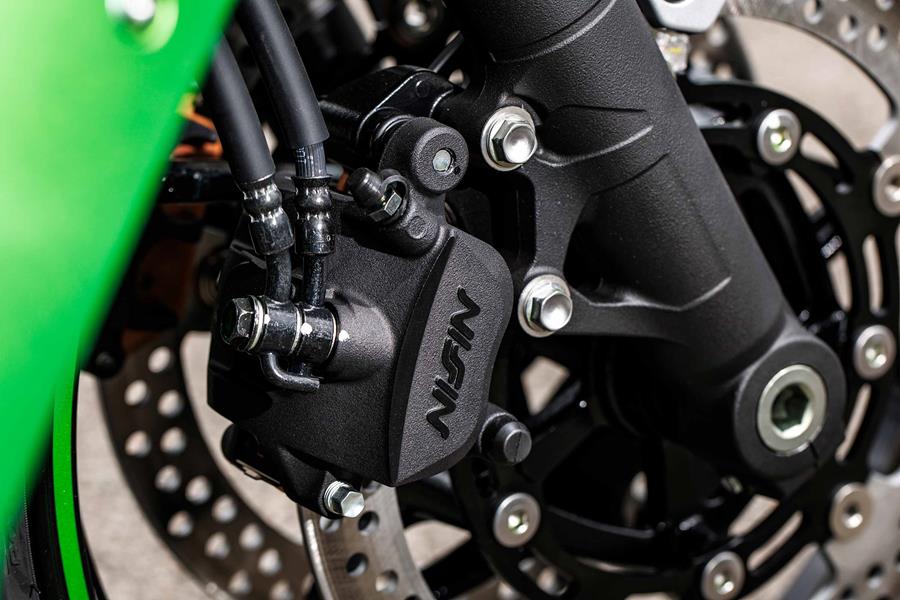
Z7 Hybrid: Handling and Ride Comfort
The Z7 Hybrid's innovative design, featuring an electric motor and battery surrounding the petrol engine, comes with some trade-offs in handling and ride quality.
Handling Characteristics
* Top-Heavy Feel: The placement of the heavy electric motor and battery high in the chassis contributes to a top-heavy feel, particularly at slower speeds. This can make the bike feel unstable during tight turns or maneuvers.
* Tight Turning Circle: The long wheelbase, designed to accommodate the battery pack, results in a tighter turning circle compared to conventional bikes. This may make navigating narrow spaces or tight corners more challenging.
Suspension and Ride Comfort
- Harsh Suspension: Despite good brake and fork components, the Z7 Hybrid's shock absorber is relatively stiff and struggles to absorb bumps effectively. This results in a less comfortable ride, especially on rough roads.
Key Takeaways
* Trade-offs: The Z7 Hybrid's design prioritizes electric power and range but compromises some handling characteristics and ride comfort.
* Practical Implications: Riders should be aware of the bike's top-heavy feel and tight turning circle when navigating challenging terrain or urban environments.
* Consider Alternatives: If ride comfort and handling are paramount, riders may consider traditional petrol-powered bikes or hybrid models designed with more balanced weight distribution and suspension systems.
Engine: 3/5
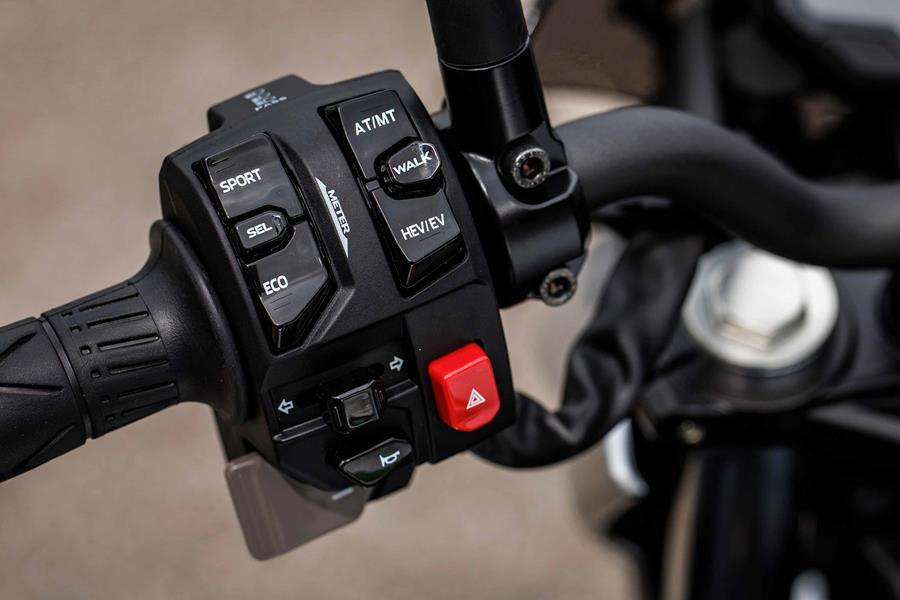
Z7 Hybrid: A Blend of Performance and Efficiency
The Z7 Hybrid offers three distinct driving modes: Sport-Hybrid, Eco-Hybrid, and fully-electric EV. Each mode caters to different driving preferences and prioritizes either performance, efficiency, or pure electric range.
Sport-Hybrid Mode
- Manual Gear Shifting: This mode allows drivers to control gear changes using bar-mounted buttons. This unconventional setup may feel odd for drivers accustomed to automatic transmissions, especially considering the automatic shifting option in Eco-Hybrid mode.
- Engine Response and E-Boost: The engine boasts a responsive throttle and benefits from an e-boost function that provides a temporary boost of power. This feature is particularly helpful for overtaking maneuvers, providing an extra surge of acceleration.
- Gearbox Quirks: While the e-boost is a welcome addition, the gearbox can be a source of frustration. Gear changes are noticeable and can result in a lurching sensation, especially when maintaining consistent throttle.
Eco-Hybrid Mode
- Automatic Gear Shifting: This mode features automatic gear changes, offering a more relaxed driving experience. The transmission seamlessly selects the optimal gear for fuel efficiency, optimizing power delivery for a smooth and comfortable ride.
- Fuel Economy Focus: The Eco-Hybrid mode prioritizes fuel efficiency, utilizing the electric motor to assist the gasoline engine during acceleration and deceleration. This helps to reduce fuel consumption and emissions.
Fully-Electric EV Mode
- Zero-Emission Driving: The fully-electric EV mode allows for completely emission-free driving, relying solely on the electric motor for power. This mode is ideal for short commutes or city driving, where range is less of a concern.
- Electric Range: The specific electric range will vary depending on factors such as battery capacity, driving style, and environmental conditions.
Key Takeaways:
- The Z7 Hybrid offers a versatile driving experience with three distinct modes.
- The Sport-Hybrid mode prioritizes performance and features an e-boost function, but the manual gear shifting and gearbox quirks can be a drawback.
- Eco-Hybrid mode focuses on efficiency with automatic gear changes and fuel-saving technologies.
- The fully-electric EV mode offers zero-emission driving for short commutes or city driving.
- The optimal driving mode depends on individual needs and preferences.
Fuel Economy and EV Mode
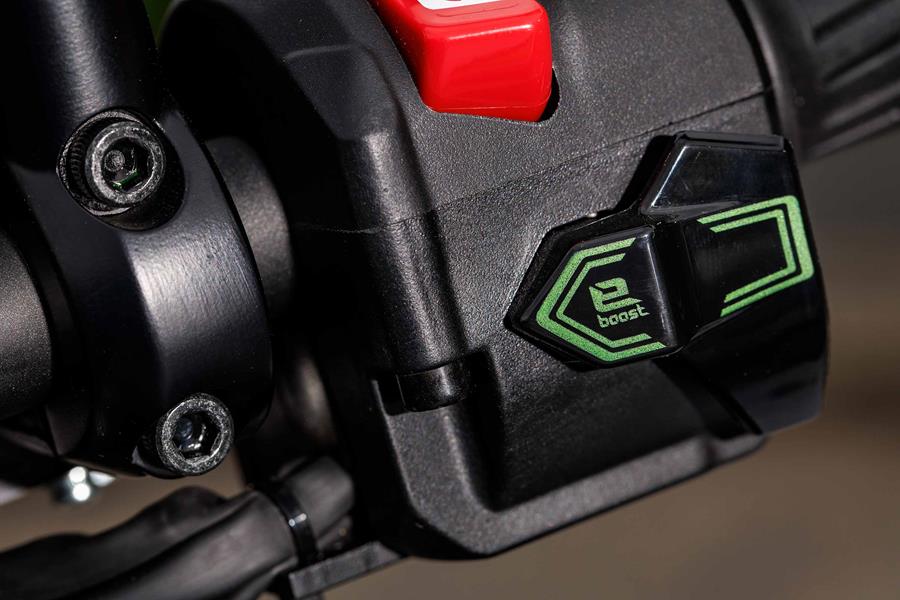
Z7 Hybrid: Eco-Hybrid Mode & EV Mode Analysis
The Z7 Hybrid boasts impressive fuel efficiency in Eco-Hybrid mode, achieving an average of 80mpg with the start/stop system engaged. This mode prioritizes fuel economy over performance, resulting in a smooth but less spirited driving experience.
Eco-Hybrid Mode:
-
Pros:
- Excellent fuel economy: Achieves up to 80 mpg, significantly reducing fuel consumption.
- Reduced emissions: Contributes to lower carbon footprint.
-
Cons:
- Sluggish acceleration: The gearbox prioritizes fuel efficiency, leading to delayed acceleration.
- Unresponsive gear changes: The automatic gearbox often holds gears for longer than necessary, hindering quick acceleration.
EV Mode:
- Range: Provides a pure electric range of 5-8 miles, ideal for short urban commutes.
-
Pros:
- Zero emissions: Operates silently and cleanly during EV mode.
- Improved urban driving: Suitable for stop-and-go traffic, offering smooth and quiet acceleration.
-
Cons:
- Limited Range: The EV mode has a short range, requiring reliance on the petrol engine for longer journeys.
- Gearbox behavior: The gearbox's tendency to lurch during gear changes persists even in EV mode.
Key Takeaways:
- While the Z7 Hybrid's Eco-Hybrid mode excels in fuel economy, its gearbox behavior can hinder responsiveness and create a less satisfying driving experience.
- The EV mode provides a practical solution for short commutes, offering zero-emission driving. However, the limited range necessitates reliance on the petrol engine for longer journeys.
- The gearbox's inherent tendency to lurch during gear changes across both modes may need improvement.
Practical Implications:
The Z7 Hybrid's Eco-Hybrid mode is a compelling option for drivers prioritizing fuel economy and reduced emissions. However, potential buyers should consider the trade-off in performance. The EV mode offers a valuable feature for short commutes but requires realistic expectations regarding its range.
Reliability and Build Quality: 4/5
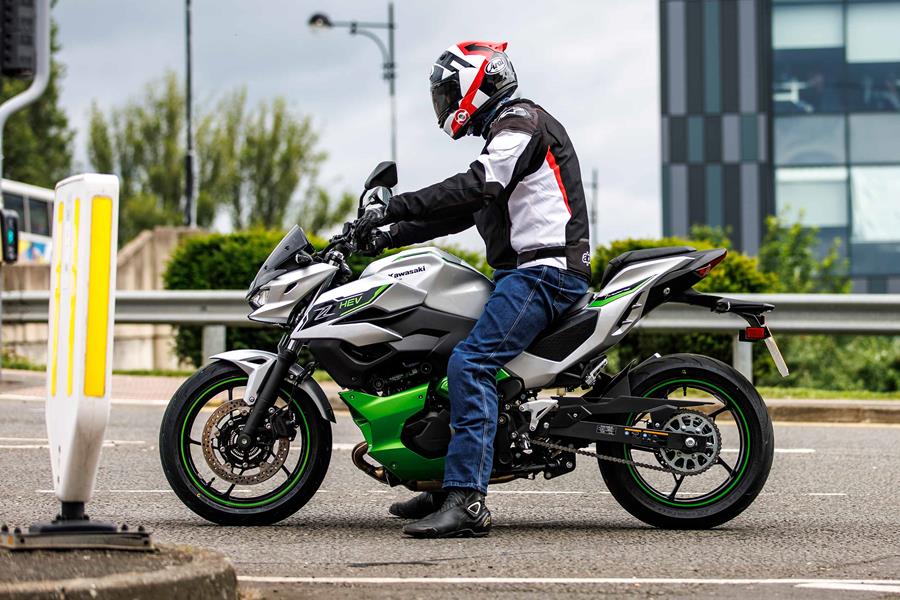
Manufacturing and Warranty
The Kawasaki Z7 Hybrid, like many of the brand's middleweight models, is assembled in Thailand rather than Japan. This is becoming increasingly common for motorcycle manufacturers due to cost-effectiveness and skilled labor availability. There is no reason to expect a decrease in reliability due to this change. The Z7 Hybrid comes with a comprehensive four-year warranty, providing peace of mind for owners.
Powertrain: Reliability and Innovation
The Z7 Hybrid is powered by a well-regarded, proven parallel-twin engine, known for its reliability and smooth power delivery. The hybrid system utilizes a proven technology, similar to that found in many other hybrid vehicles. It utilizes a small, electric motor to assist the engine during acceleration and regenerative braking to capture energy during deceleration. This technology offers benefits such as improved fuel efficiency and reduced emissions without sacrificing performance.
Long-Term Considerations
While the long-term impact of the hybrid system on the gearbox is yet to be fully understood, Kawasaki has a solid reputation for building reliable motorcycles. The Z7 Hybrid utilizes high-quality components and stringent manufacturing processes, suggesting a robust and durable design.
Key Takeaways
- The Z7 Hybrid's manufacturing location in Thailand does not compromise its reliability.
- The proven parallel-twin engine and hybrid system point to a reliable and efficient powertrain.
- The four-year warranty provides assurance for owners.
- While long-term gearbox impact needs further assessment, the bike's overall design suggests a well-engineered and reliable machine.
Value and Rivals: 3/5
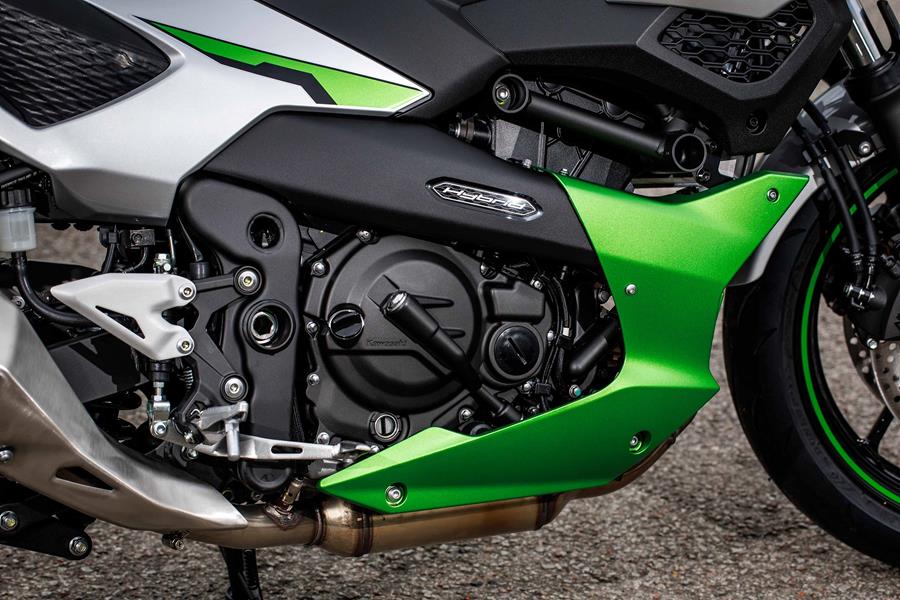
Kawasaki Z7 Hybrid: Fuel Efficiency vs. Cost
The Kawasaki Z7 Hybrid boasts impressive fuel economy, achieving an average of 70mpg. This is a significant improvement over its petrol-powered counterpart, the Z500, which typically achieves around 50mpg.
Technical Specifications:
- Fuel Economy: 70mpg (combined)
- Engine: Hybrid powertrain combining a petrol engine with an electric motor for increased efficiency.
- Battery Range: Up to 20 miles on pure electric power, ideal for short commutes and urban environments.
Pros:
- Reduced Running Costs: The Z7 Hybrid's high fuel efficiency translates to lower fuel bills, making it a more economical choice for long commutes or frequent riders.
- Environmental Benefits: The hybrid system reduces CO2 emissions, contributing to cleaner air quality, especially in urban areas.
- Improved Performance: The electric motor provides instant torque, enhancing acceleration and making the ride more enjoyable.
Cons:
- Higher Purchase Price: The Z7 Hybrid commands a premium price, costing over double that of the Z500. This initial investment may be a deterrent for budget-conscious riders.
- Limited Zero-Emissions Zones: While the Z7 Hybrid offers electric-only operation, the lack of widespread zero-emission zones in the UK currently limits its full potential for reducing urban pollution.
Key Takeaways:
- The Z7 Hybrid is a compelling option for riders seeking a more eco-friendly and fuel-efficient motorcycle while retaining the performance and style of a traditional Kawasaki.
- However, the high purchase price may outweigh the long-term savings for some riders, particularly in areas with limited zero-emission zone infrastructure.
- Ultimately, the decision to invest in the Z7 Hybrid depends on individual riding needs, budget constraints, and environmental priorities.
Equipment: 3/5

Underwhelming Equipment for the Price
Despite its hefty £12,000 price tag, the Z7 Hybrid's equipment list falls short of expectations for a premium motorcycle.
Key Missing Features
- Adjustable Forks: The standard forks lack adjustability for preload, rebound, or compression damping. This limits rider customization and fine-tuning for different riding conditions.
- Angle-Responsive Electronic Aids: The Z7 Hybrid lacks sophisticated electronics like cornering ABS or lean-sensitive traction control, which are common on competing models. This can compromise safety and performance in challenging riding scenarios.
- Traction Control: The absence of traction control means riders must rely solely on their skills to manage tire slip, potentially leading to reduced stability and control, especially in slippery conditions.
Dash and Connectivity
The bike includes a standard TFT dash with connectivity, but the Rideology app and dash interface lack the sophistication found in some competitors.
- Limited Rideology App Features: The app lacks features like turn-by-turn navigation, route planning, and advanced data logging capabilities, which are common in modern motorcycle apps.
- Basic Dash Interface: While the TFT dash provides essential information, its graphics and functionality are not as intuitive or advanced as some rivals, which offer more customizable layouts and rider aids.
Practical Implications
These omissions mean the Z7 Hybrid feels less premium and misses out on features that enhance safety, performance, and user experience.
Comparison with Competitors
Many competitors in the £12,000 price range offer adjustable suspension, advanced electronics, and comprehensive connectivity features. This makes the Z7 Hybrid's equipment feel underwhelming compared to its rivals.